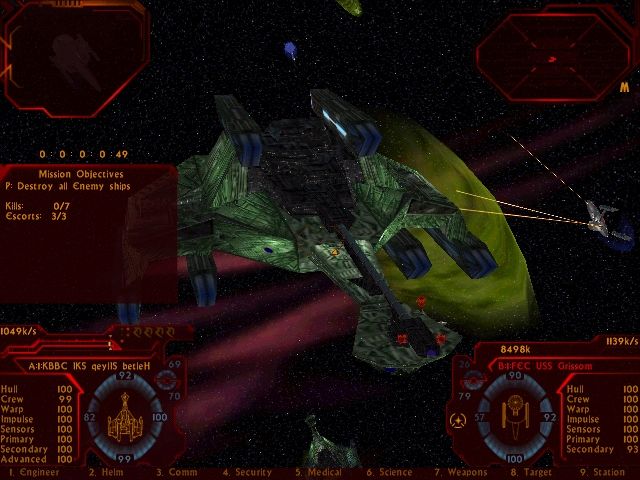

Praxis, the sole moon of the Klingon homeworld Qo'noS, is only a secondary energy production facility at this time. The Empire's energy production needs are met largely by dilithium and other important resources in the Tal'Ihnor Gates system, near Romulan space. The Klingon Empire is led by Chancellor Lorak, a noble but ailing ruler, and maintains a peace with the Federation much like the Cold War-type situation presented in Star Trek VI.

Star Trek: Klingon Academy takes place during 2291 CE (Klingon year 1666 IR, Imperial Reckoning), after the events of Star Trek V: The Final Frontier and prior to those of Star Trek VI: The Undiscovered Country. 2.3 Ship Systems, Operation, and Weapons.Basically, it restored a view of starship combat as being more akin to naval capital ships than to fighter jets, a common criticism of the Starfleet Academy game. However, it also made a change in game mechanics, and is widely considered to be more true to Star Trek dynamics than its predecessor. The change is similar in style to the PC game Star Wars: X-Wing and its sequel, Star Wars: TIE Fighter. Star Trek: Klingon Academy is the successor to Interplay's Star Trek: Starfleet Academy, this time played from the viewpoint of the Klingon Empire. Christopher Plummer and David Warner reprised their respective roles as Chang and Gorkon for the production of Star Trek: Klingon Academy. The game follows a young Klingon warrior named Torlek as he attends the Elite Command Academy, a war college created by General Chang to prepare warriors for a future conflict with the United Federation of Planets.

It was released on Jto moderately positive critical and fan response. Star Trek: Klingon Academy is a starship combat space flight simulator computer game developed by 14 Degrees East, an internal development house of publisher Interplay Entertainment.


 0 kommentar(er)
0 kommentar(er)
